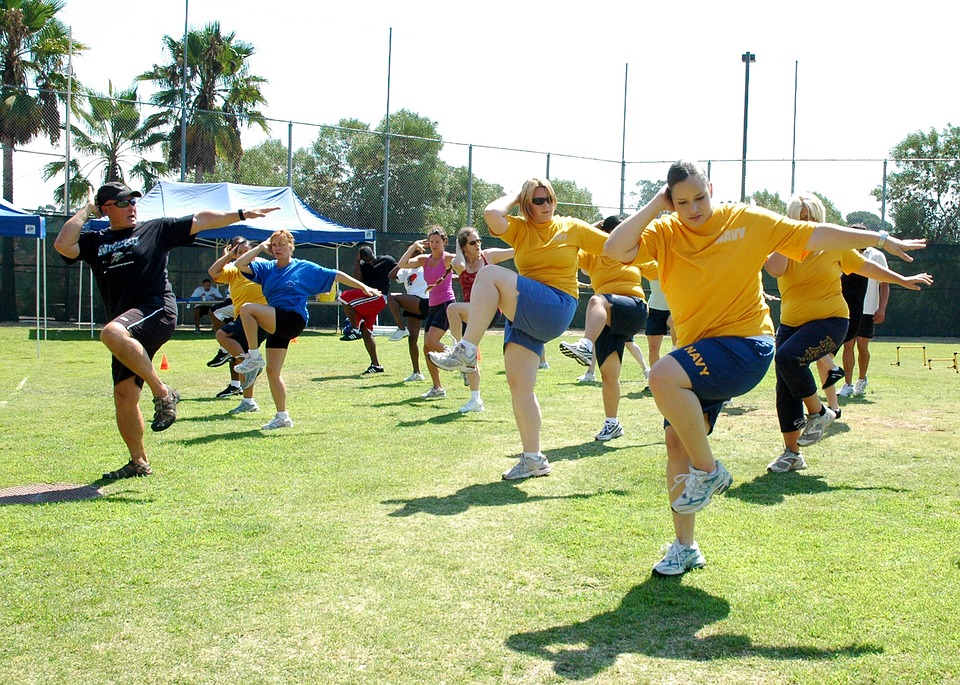 The link between Plantar Fasciitis and obesity is well established.
The link between Plantar Fasciitis and obesity is well established.
Carrying extra weight adds extra strain to your feet, which in turn adds stress and strain to your heel and fascia.
A study from 2007 found that individuals with a BMI (Body Mass Index) of 25 were 1.7 times more likely to suffer from chronic heel pain, while another study concluded that individuals with a BMI of at least 30 were 2.9 times more likely to suffer from Plantar Fasciitis.
The connection between Plantar Fasciitis and obesity can be especially disheartening for individuals who are overweight and attempting to get active and shed excess pounds.
In many cases, heel pain begins as a result of adding new strain or stress on the feet through increased activity–which can discourage further attempts at exercising.
Does Plantar Fasciitis Go Away with Weight Loss?
By and large, the symptoms of Plantar Fasciitis will diminish and disappear with proper treatment and fascia support. The sooner treatment begins (including weight loss) and the more consistent treatment is, the higher the success rate.
Unfortunately, getting active and losing weight while experiencing heel pain adds a few unique challenges to an already challenging task.

How to Lose Weight With Plantar Fasciitis
Losing weight can feel like an uphill battle for anyone. Add in heel pain and discomfort from Plantar Fasciitis, and losing weight can seem all but impossible. The good news is that losing weight while suffering from Plantar Fasciitis is completely possible–and can even be enjoyable–if you are diligent about incorporating the following changes into your lifestyle.
- Get active, comfortably. Getting active while dealing with heel pain is a challenge that you’ll be much more comfortable meeting if you wear the right footwear and support your arches and heels. Invest in a pair of sneakers that will support you, and fit all your footwear with cost-effective heel seats or fascia bar inserts to support, cushion, and reduce inflammation to your feet.
- Increase activity gradually. Remember, losing weight is all about incorporating lifestyle changes, not taking desperate measures. Set a goal to walk for a few minutes each day, and gradually increase the length of your exercise sessions (instead of setting out to walk a 5k after very little physical activity). By pacing yourself and making true lifestyle changes, you’ll set yourself up for success and avoid further inflaming your Plantar Fasciitis.
- Try low-impact exercises. Low-impact exercises can keep you active and help with weight loss while reducing stress to your feet. Try swimming, water aerobics, yoga, spin cycling, and rowing machines are excellent calorie burners but let your feet take it easy.
- Exercise your feet and heels. While cardio and physical activity that gets you moving is the ticket to weight loss, don’t leave your feet behind when it comes to exercise! By keeping the muscles and tendons in your feet limber and toned, you’ll make sure they’re in great shape to take you where you need to go. Try these easy and effective stretches to keep your feet in shape!
- Manage diet alongside exercise. While activity plays a critical role in weight loss, it should go hand in hand with dietary changes. As a rule of thumb, use the “double down” rule. Double the amount of water you drink, the amount of fresh fruits and vegetables you consume, and the amount of lean protein you’re eating. Limit refined foods like white flour and sugar, and be extra careful about the calories you drink (especially soda and juice).
When it comes to Plantar Fasciitis and weight loss, the most important factor of all is your attitude. Don’t get discouraged by heel pain, but do take steps to manage it and alleviate symptoms so you can get active without pain. Not only will losing weight keep heel pain at bay in the future–it’ll make staying healthy and active that much easier.




Just out of curiosity, do any of your products help to reduce or prevent shin splints?
As an aside, several years ago I had a heel spur – very painful but within a short period of using the night splint and heel seats the pain went away and has never returned. I now use the gel filled inserts (not sure of the name) to help cushion my feet. I am trying to get more active but my issue is shin splints if I try to run.
thanks.
Here’s a little tip! Concrete is very hard! Try running on the street, or on dirt paths for a month or so, until you build some strength in your legs! You should be okay to run anywhere!
If you have Plantar Fasciitis, the last thing you want to be doing is running on concrete!
Any good DVDs that I can do at home while my plantar fasciitis/heel spurs are acting up? With 2 little ones at home, it’s hard to get to a gym but I can always work out at home while they’re napping! I was doing CIZE but couldn’t walk for 3 days because of the heel pain the last time I did it. 🙁
Hi Jen, thanks for reaching out 🙂
We don’t have any specific DVD’s that we recommend, but YouTube can be a great resource. This video is designed for people who have an injured foot and leg, so it is very easy on the feet: https://youtu.be/rCDRf7bEFNA
Your doctor may also have specific exercise routine recommendations.
Hope this helps!
My heel is hurting a lot right now. Not diagnosed yet but I’m worried about plantar fasciitis. I did 21 day fix Pilates today with 10 min abs. Tacked on some chest flies, presses, and skull crushers. With frog kicks. I’m trying to let it chill but it sucks!! I can’t do the gym either. 3 small kids at home.
You’ve got this Nikki! That sounds like a great, low-impact exercise routine. Try stretching your feet throughout the day and icing after your workout. We also have an array of guaranteed treatments – https://heelthatpain.com/treatments/ If they don’t work we’re happy to refund your purchase. They are very effective for plantar fasciitis, but also work for many other heel pain conditions. Hope you find the relief you need 🙂
If you have a foot doctor,you should go & request the insoles for planter fasciitis. They will help while you walk and exercise because I have had plantar fasciitis for maybe 6 years now. I put them in my gym shoes and boots. They do help,trust me !
Im easily 100 lbs overweight. I can walk MAYBE a 1/2 mile before excruciating pain in my feet takes over. Then my feet swell for days after
Its so discouraging! Really need all the ideas I can get. Thank you
Sorry to hear you’ve been having such trouble with your feet 🙁 It can definitely make weight loss and activity a whole lot more challenging. Have you seen our list of 25 exercises you can do even with plantar fasciitis? Elliptical, stationary cycle, or swimming may be easier on your feet if you have access to proper equipment. If not, simple strength exercises for your arms, legs, and core can not only help you get stronger, but also help with weight loss! Check out our top exercises here: https://heelthatpain.com/25-plantar-fasciitis-exercises/
I’ve been dealing with PF for 3yrs. I used to be a runner and can’t anymore. Even standing for more than 15mins is excruciating. I’ve done all the stretches, exercises, phys therapy, cortisone shots, rest, ice, sleep braces, heel inserts, custom orthotics, massage, roller balls etc etc. I have since gained 70lbs and it hurts even worse. PF is an exhausting downward spiral.
Wow, sounds like you’ve been very proactive in finding a solution to your heel pain! Hope you find these exercises helpful. Even doing seated exercises for 10 minutes a day in combination with proper nutrition can do wonders for your physical health and emotional wellbeing 🙂
I suffered for a year and went a doctor that perform electric shock, that he rolled on my heels, it hurt, but I felt releive,
I forgot what it was called, but it’s on u-tube it took three treatments, cost about 100.00 each time.
ESW was a procedure that has shockwaves and is 84% successful, where the open surgery was 50-71%. I was to go in for this procedure and the Anesthesiologist called and cancelled the procedure due to my BMI.
Of course being that this procedure is still expirmental my insurance wouldn’t cover it so I was going to pay out of pocket. Now I’m looking into stepping into a bear trap!
Yes it is!! I’ve tried everything too! Nothing helps but bed rest for weeks. Who can afford to that? I had to quit my job at post office because of it. I’m working a less physical job and they still hurts.
I am so glad I came across this page! I have been suffering fro, PF for last 5-6 months and the pain is terrible! I have put on loads of weight too… everyone says “exercise, exercise, exercise!!” but no one understands how much it hurts! Simply walking is a tough tough thing. I read through all the comments and your responses. I am feeling so motivated right now and will try everything that you have recommended. thanks and hope I come back to you with positive results 🙂
You can do it!! Feel free to join our Facebook community: https://www.facebook.com/groups/HeelPainSupportCommunity
We have incredible members who can provide support and advice. There are a few members who have learned how to manage their plantar fasciitis enough to run marathons again!
Can aerobic be done with plantar fascitis
Hi Tina, thanks for the comment 😀
It really depends on the type of aerobics that you are doing – water aerobics would be a great choice if you have plantar fasciitis, while a dance aerobic class might be too much pounding on your feet. The good thing about aerobics classes is that the instructor can usually help you modify the exercises to work for you if you are experiencing pain!
I’m doing a kickboxing class with PF and a freshly healed broken toe. I just let the gym know that I’m basically ‘broken’ lol. I have been a competitive athlete in the past and have many old injuries coming back to haunt me in my 50’s I’ve also been diagnosed with fibromyalgia and arthritis. I don’t run, do burpees or anything that impacts my foot too much. I’m also eating super clean again and losing weight. 20 pounds to go. I ice it, use arnica and hemp oils (separately) w/ great results there. I go to my chiropractor and get treated. My friends own a place called Bio-tique here in San Diego and they have a machine that I get Electro magnetic (?) treatments, I forget the name of the device, but it’s miraculous for my whole body. It’s emfp or something. I take ibuprofen when I have to and get massages when I can. I’ve invested in PF approved footwear and never walk barefooted. All of this and I’m still hobbling around. Going to see a foot doctor soon. I don’t usually have good luck with drs, but it’s necessary. Ugh, it’s so annoying and painful!
I have a torn ACL and meniscus in my left knee, PF in both my feet, Achilles tendinitis in my left heel, and something weird going on with the big toe on the right foot. I’m also about 100 lbs overweight. I’ve tried to lose weight, but I feel like I keep having to choose being safe over being slim, and I’m tired of making that choice. The knee injury had been there for about 5 years. I’ve never had surgery on it because I couldn’t afford to on my own and I have no help. Generally, it’s fine, but every now and again it catches and I can’t extend my leg fully. I walk with a weird limp and the knee hurts when that is the case. Coupled with the PF, AT, and some weird nerve thing that is happening just below the arch of my right foot, trying to exercise would be a nightmare. To make matters worse, I’m 25 and I feel like an old crippled lady. What can I realistically do to lose weight? I’m super discouraged…
Sorry you’ve had so much trouble, Jamillah 🙁 Dietary changes can make a huge difference for weight loss even if you’re not able to exercise. Swimming is also a great option, especially if you struggle with injuries, because it doesn’t create an impact on your joints.
I have found deep water aerobics to be an excellent no-impact workout…..
Running is an obsession for me and till sometime back it was with me as daily schedule but of late , after i have started getting heel pain and discomfort for whole of the day due to Plantar Fascitis , I was unable to run everyday. Kindly suggest some measures that I should adopt for treatment and that keeps me going with my jog on daily basis.
Is pilates helpful for PF cure and weight management? I am suffering for over a year now… tried e everything.. shock therapy didn’t help nor ultra sound. I took my second Injection today after 9 months.
I agree the pain is unreal. I’m getting pain in front of my right heal across the top of the foot in the arch I’ve never felt anything so painful.
Have never wanted anything to go away so bad, this has even caused me to gain weight I use to walk twice a day morning and night not far down the road and back usually half hour each time. not any more to painful. Why do people not understand
Me too! My legs are so much bigger than this time last year. Just feel swollen. However, I walk daily. Then, at work, am in my feet all day. Luckily a customer suggested a brand of shoe to help with pf. I’m now on my way back to getting back in shape. Still hurts but no where what I had. The weight gain is more upsetting to me. The pain was just too much to keep up with exercise like I did.
What brand of shoe did they recommend d to you?
I’ve been awake not able to sleep because of aching in my toes from my plantar fasciitis, so I googled it to find helpful advice and found this page. I’m sad that so many people suffer from this debilitating condition but I’m grateful to read the comments and know that I’m not alone in this battle to overcome this condition. I am about to turn 60 , I am 12 kg over weight. I used to be fit and healthy and never had problems loosing weight. But now I have PF in one foot and a broken cuboid bone injury in the other foot, and now cellulitis skin infection on my ankle. So life is a bit sucky right now 😩.
But I found this “metabolic renewal “ program for women weight loss, a combination of healthy eating with 15 minutes workout 3 times a week. I’m hoping if I can loose some weight my feet problems will go away 🤔
Heel pain. Trying to walk daily about 45 minutes then standing job . In pain which is so annoying . I think I’m going to have to strict diet. And maybe yoga . The walking and the standing just isn’t helping me atall.